UC Magazine is travelling back in time this spring to bring you stories from your fellow alums. We asked for your favourite UC memories and you responded in droves. We’ve put together a great selection of stories about friendship, love, classes, parties and more. They’re quirky, intelligent and heartfelt, so get ready to laugh and cry along with the storytellers as you enjoy a slice of UC life.
Professor Norman Austin (BA 1985 UC), Diana Bennett (BA 1965 UC), The Rev. Dr. John C. Carr (BA 1959 UC), Dr. Miriam Clavir (BA 1969 UC), Sheri Crawford (BSc 1988 UC), Dr. Anne Innis Dagg (BA 1955 UC), Linda Silver Dranoff (BA 1961 UC), William (Bill) Emigh (BA 1956 UC), Susan Fine (BSc 2019 UC), Michael Frankfort (BSc 1999 UC), Ryan Goldsworthy (BA 2010 UC), Gary Grierson (BCom 1965 UC), Hart Hanson (BA 1981 UC), Abbey Lynne Kachmar (BA 2017 UC), Nicolette Klemoff (BA 1986 UC), Chelsea Kowalski (BA 2019 UC), Professor Alexander Leggatt (BA 1962 UC), Thea Lim (BA 2004 UC), Gail Dexter Lord (BA 1968 UC), Dr. H. Ian Macdonald (BCom 1952 UC), Lawrence Martin (BA 1961 UC), Ruth A Miller (BA 1960 UC), Dr. Carol Nash (BA 1980 UC) , Dr. Christine Overall (BA 1971 UC), John S. Parry, Tove Rasmussen (BA 1986 UC), Sue Ropchan (BA 1978 UC), Herbert Samuels (BA 1958 UC), Mark Elliott Shapiro (BA 1970 UC), Tim Southam (BA 1984 UC), KimEija Taipaleenmaki (BA 1984 UC), Professor Shauna Van Praagh (BSc 1986 UC), Mavra Wasim (BSc 2019 UC)
Herbert Samuels (BA 1958 UC)
I acquired my love of crossword puzzles in the Junior Common Room of UC. A few of us would meet before classes and collaborate on that day’s Globe and Mail puzzle. One day, a clue was “merganser.” We learned that the answer was “smew.”
From then on, when I would meet my friend, Marv Schiff, one of us would say, “What’s smew?” and the other would reply, “Merganser.”
Such was the sparkling intellectual atmosphere suffusing the college and its students.
The Rev. Dr. John C. Carr (BA 1959 UC)
I have many fond memories of UC - the beautiful building, the beginning of lifelong friendships, kosher dinners in professors’ homes, staffing the Reading Room in the evenings, and the expansion of my vision of the universe as a result of studies in Philosophy and Ancient Near Eastern Studies. However, my strongest and favourite memory is of a first-year English class in which the professor read to us, with obvious affection, the following words written by Chaucer (Canterbury Tales): “Whan that Aprill with his shoures soote The droghte of March hath perced to the roote, And bathed every veyne in swich licour Of which vertu engendred is the flour; Whan Zephirus eek with his sweete breeth Inspired hath in every holt and heeth.... (Translation: When in April the sweet showers fall and pierce the drought of March to the root, and all and veins are bathed in liquor of such power as brings about the engendering of the flower, When also Zephyrus with his sweet breath exhales an air in every grove and heath...). It was not so much the meaning of the passage that caught my imagination. Rather, it was the beauty of the professor’s immersion in and interpretation of the words and the love of learning that he manifested.
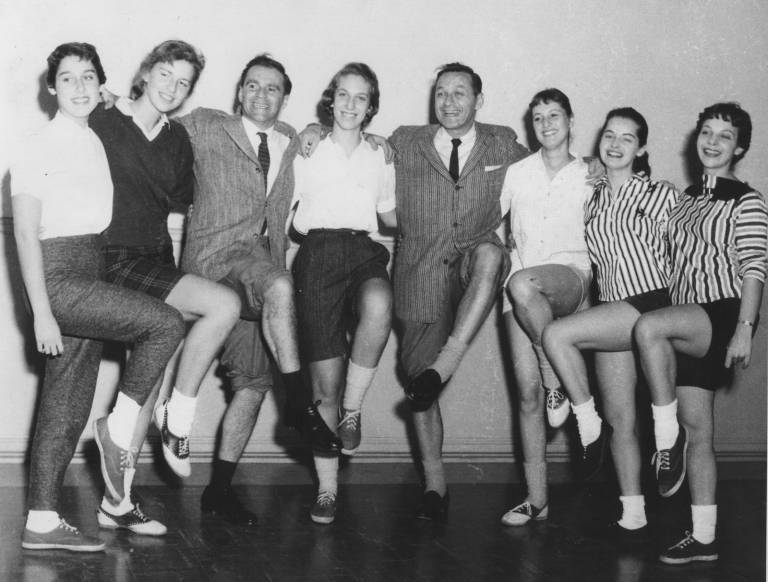
Ruth A Miller (BA 1960 UC)
The photo on my refrigerator reminds me of one of my favourite memories of University College. It’s a photo of six young woman and two men, in a chorus line, with one leg lifted and bent at the knee. It was taken at a rehearsal for the UC Follies, 1957. The six, of whom I was one, were practising our dance steps for the show. We usually practised in the back room of the JCR. I don’t know if that back room is still there but that’s where the choreographer, Freddie Reinglass, put us through our paces. The UC Follies, part of University College life since 1880, was something we “girls” wanted to be part of. It was exciting, it was theatre and we were young and enthusiastic.
Who were the two men, you are wondering? The two men were Johnny Wayne and Frank Shuster, famous Canadian comedians, graduates of UC and performers in the Follies in their era.
One day, they came to our rehearsal. Maybe the publicity team arranged it. What excitement. Before we knew it, they were part of our chorus line, pant legs rolled up, toes pointed, smiling and kibitzing with us and creating wild hilarity. Someone snapped a photo.
Years later that photo turned up in the UC Magazine, with a request to identify the dancers. I immediately wrote to the magazine with the names of all of us (not Frank and Johnny of course—they needed no identifying). It was thrilling to see that photo after so many years. You can see it, too, if you check the archives of the University of Toronto online and click UC Follies, 1957. I’m the one on the left.
A friend blew up the photo and sent it to me. It’s on my refrigerator. I smile when I see it and think of those halcyon days when we were young and everything was possible.
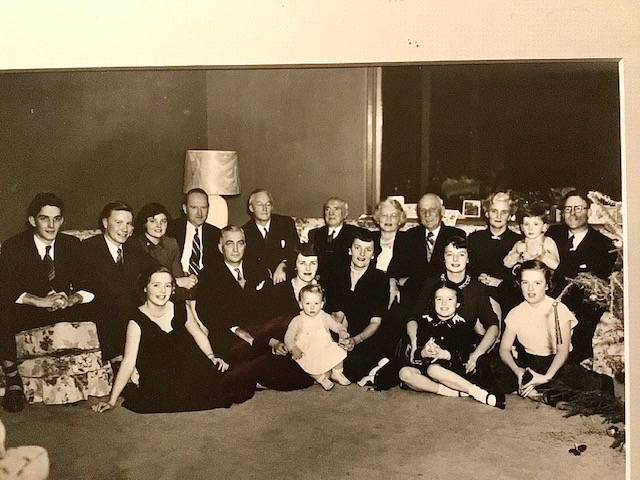
John S. Parry
School of Graduate Studies, Inst. for the History & Philosophy of Science & Technology, 1976
In 1872, Louis Jacob Breithaupt, a 16-year-old from Berlin (now Kitchener), Ontario, became a huge fan of University College. In January of that year, he enrolled at Day’s Commercial College in Toronto and began boarding at 218 Terauley. He wrote every day in his diary. On Saturday, 24 February 1872, “In the afternoon I was with [fellow boarder] Mr. Schmidt to the University museum [i.e., West Hall].” On Saturday 13 April, “I was up at the University – museum, also up in the tower … A splendid sight of the city & lake.”
For the Friday, 24 May holiday: “Queens [sic] 53rd Birthday – [brothers] William, Johnny & [cousin] Henry [Wagner] arrived here. … We went through the Queens Park & also were at the University. In the afternoon we went over to the island on the ferry boat … through the greater part of the city. … This evening we were till about 8:30 o’clock, seeing rockets, bonfires & c.” On the 25th, they were “about an hour” at “the University museum.”
Breithaupt family lore claims four generations of tanners in Germany and four in North America. Like his father, Louis, Louis Jacob became president of Breithaupt Leather in Berlin. He married Emma Devitt of Waterloo in 1881 and they had eight children. He served as mayor (like his father, brother John, and son Louis O.) and MLA, kept diaries for 65 years (see University of Waterloo Archives), and died in 1939, aged 84.
Many of Louis Jacob and his siblings’ descendants (and their spouses) have attended U of T. Son Louis O. studied commerce at Victoria College 1909-10 and headed Breithaupt Leather (like his son Louis Paul); he was mayor, MP, lieutenant-governor, LLD (Toronto, 1955), and chancellor 1959-60 of U of T’s Victoria University.
The family of Louis Jacob’s eldest child, Louise Evelyn (1882-1939), and her husband, Dr. John R. Parry (BA 1900 UC; Toronto MB 1903), included U of T students from nine decades (1890s to 1970s) (see photo). Attending UC after Jack were their daughter Margaret Murgatroyd (BA 1928 UC) and her daughter Beth Lennard (BA 1952 UC). In 1984, their grandson John S. Parry prepared, with Principal Peter Richardson, The Great Good Place, about UC.
Today – 150 years after Louis Jacob’s visits to UC – his great-great-great-grandson William Wynne studies at Trinity College, the lake is still visible from the UC tower, and Canadians celebrate Queen Victoria’s birthday (May Two-Four) with fireworks.
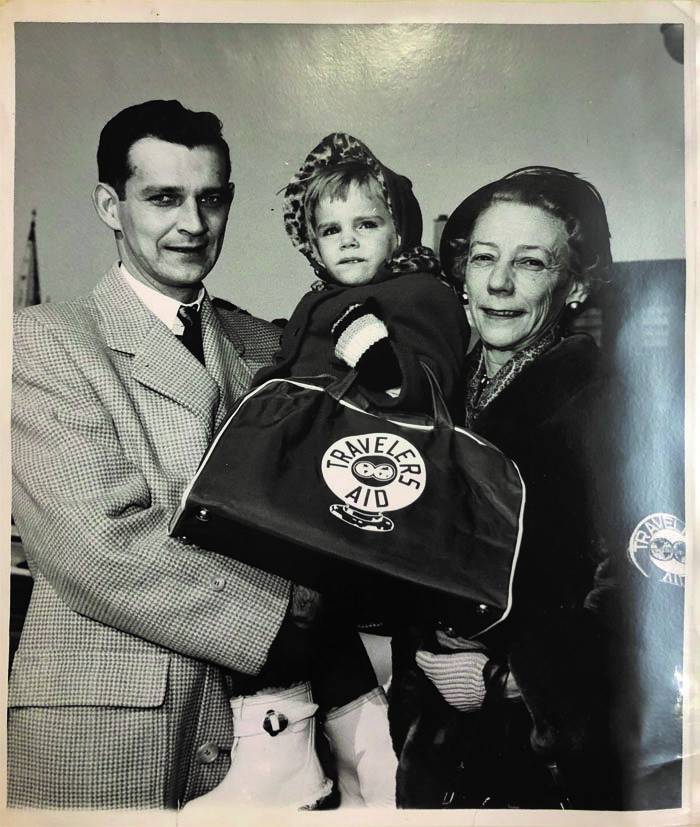
KimEija Taipaleenmaki (BA 1984 UC)
My UC Story
As we are witnessing Putin’s horrific, senseless and unprovoked attack on a sovereign Ukrainian state, I recall my first days at UC. I was born in Canada, but orphaned at the age of three. I grew up in Finland. I hardly spoke English when I enrolled at U of T. Immediately after I moved into UC residence, I promptly inquired where the bomb shelter was. Staff did not comprehend my question. They asked me: “What?”
I repeated my question: “Where is the bomb shelter?” I was told that the residence does not have one. I was flabbergasted. I then thought that the Athletic Centre must have a bomb shelter. So, I headed to the Athletic Centre. I asked again, “Where is the bomb shelter?” And I was faced with same perplexed question: “What?” I was now perplexed that there were no bomb shelters at the U of T campus. Schools and apartment buildings in Finland have bomb shelters.
There are also public bomb shelters in Finland. The siren warning about imminent Russian attack was tested every Monday at 5 p.m. Sometimes, the siren went off at other times for whatever reasons and we immediately thought the Russians were coming. The sirens are no longer tested weekly the past few years. Maybe it is because everyone has a mobile phone and the emergency alert sounds on your mobile phones.
Please consider donating money for one of the reputable organizations such as Red Cross. #Ukraine Strong #We Stand With Ukraine
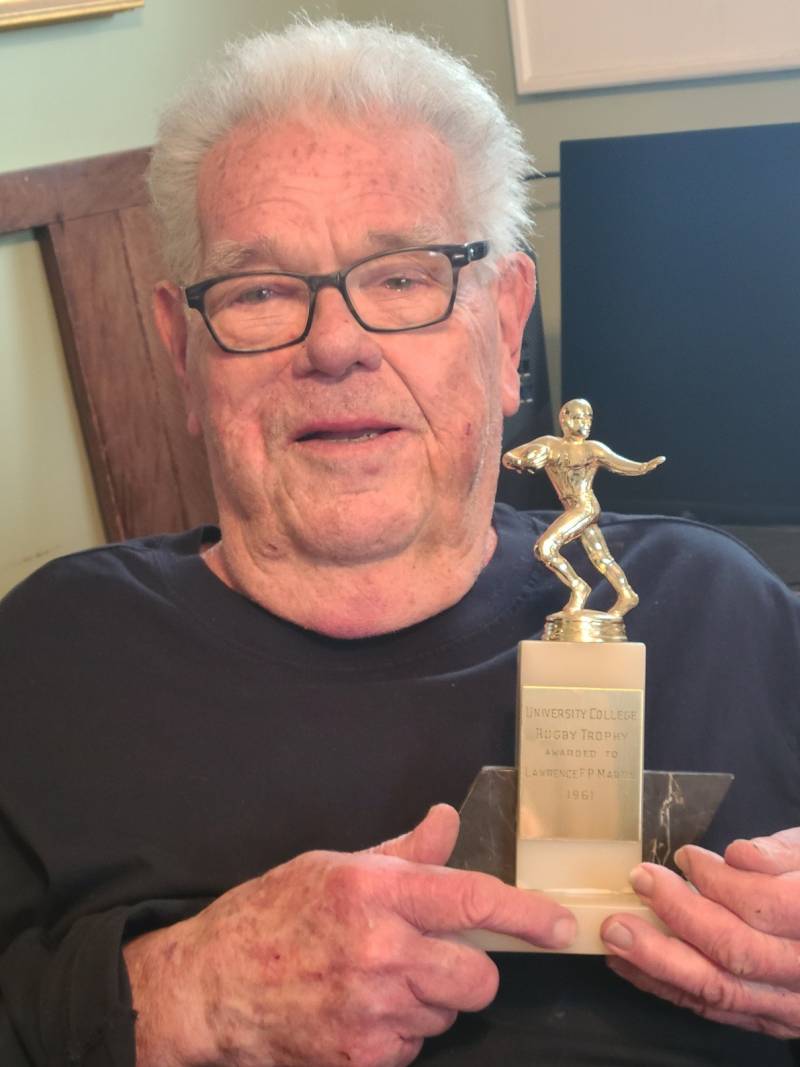
Lawrence Martin (BA 1961 UC)
My UC story, 1957 to 1961
I had played football for Jarvis Collegiate from Grades 9 to 13: bantam, junior and senior. When I enrolled at UC in the fall of 1957, I learned about the inter-college league and quickly made the Phys Ed team as a starter defensive middle guard in the 5/4 defence. They did not have a helmet to fit me, so someone cut the largest white helmet in two. The pieces were then rejoined down the middle with a leather strip and rivets so I could bend it to fit over my head.
I played for UC Phys Ed for seasons ’57, ’58, ’59 and ’60 and had two concussions using that helmet (not serious ones, though!). I enjoyed these seasons and it was the major force in keeping me in university. In the fall of 1960 (the last season), we played the Senior Engineers in Varsity Stadium in the semi-final for the Mulock Cup, but were defeated in a very tough game. In the spring of 1961 at the UC Sports Banquet, I was presented the UC Rugby Trophy, an award voted on by my teammates and coaches. As I write this letter, that trophy still sits on my desk ... a still mostly golden football player atop the plaque “Lawrence F P Martin”... a physical reminder of some of my best times at UC.
Over those four years, I had played beside many fine teammates whose names mostly escape me now, but the memories I have are forever treasured. They gave me the foundation I needed to became a high school teacher of science and English in September 1961 and also to become a football coach for the next 28 years in Welland (Eastdale S.S.) and St. Catharines (Lakeport S.S.). During that time, I married the love of my life Rene Scott and had two daughters, Catherine and Laura. Although I am long retired from teaching (1995) and sadly have of late been widowed, I still look back on occasion to my years at UC for strength, companionship and wisdom.
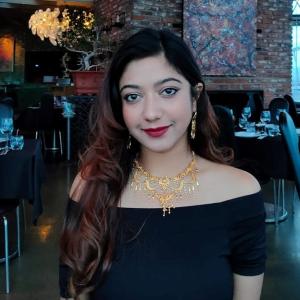
Mavra Wasim (BSc 2019 UC)
I remember shivering from the cold, the nervous sweat I broke into right before going up on the stage. Undergrad had become a high-tide choppy ocean drowning me in self-deprecating anxiety with the competitive course load. A small part of me remembered there was still something I enjoyed: singing and playing guitar. I decided I would share a small part of this at the UC coffee house at the JCR. I had become so thin and weak from the stress that my fingers started shaking when I finally started to play. I decided to cover Bad Romance, and even though the fact that everyone was staring at me was terrifying, I started to sing. I remember stopping in the middle because the anxiety kicked back in, but everyone started to cheer me on. I don’t think I had ever felt such warm and loving support from people before. I finished the song and left to cry in the bathroom. After I finished crying out the nerves, I felt so empowered and seen … it got me through the semester. I realized others were on this journey with me. Here’s to getting through some of the toughest years!
Sheri Crawford (BSc 1988 UC)
University College – Memories Of An Out-Of-Province Student
When I was in high school in West Vancouver, British Columbia, I was given some advice that I took to heart: Go to the best university in Canada. So, of course, I came to the University of Toronto! I wasn’t sure I’d make it – I’d worked two full-time jobs that summer, and it was literally days before I had to leave for Toronto that a final (and necessary) scholarship came through, and I headed out on my own.
My first weeks flew by in meeting new people, building friendships within the residence, and finding my footing in classes. And then, one day, I became really ill. For days, I was in agonizing pain, and my housemates had taken me to the hospital several times over the span of a couple weeks, until finally a doctor decided to admit me until they could figure out what was wrong. I was in that hospital for two weeks, and every single day, my new friends would come to visit me and bring me things to read. When I was finally released, with a frightening diagnosis for an 18-year-old on her own, I knew that I’d need to make some changes – many of which were going to cost me some money, of which I had ... none.
Someone suggested I try the University College offices to see if there were any scholarships or other assistance I could try. I went to the College’s registrar’s office to ask for help, and as I shared my story, the registrar’s assistant, Eva, helped me pore through the books (yup, physical bound documents!) to find and apply for whatever bursaries existed, and we managed to find one that they recommended me for, and would enable me to get some rest and recover to manage my illness. We stayed in touch throughout my years at University College, and I think of her kindness and support often. Without that helping hand, I’d never have completed my year, let alone my degree(s). Wherever you are Eva, THANK YOU from the bottom of my heart.
Dr. Carol Nash (BA 1980 UC)
If I think about my favourite memory while I was at University College in particular, rather than at the University of Toronto in general, I would have to say that what sticks with me most is the depth of quietude expressed by the interior architectural details of the building and the softness of the light that shone in through the east-facing classrooms during afternoon meetings.
Even while immersed in the discussions that might be happening during UC classes on the music of Southeast Asia, popular Canadian literature and the Bloomsbury group, as well as tutorials on mathematics, statistics and economics, I always took the time to stop my thinking process and direct my attention to experience the special feeling of the rooms I was in and to be grateful for the ability to be a witness to the ongoing historical development of that stately building of which I was so briefly a part.
Professor Norman Austin (BA 1985 UC)
University College Remembered
University College. What a strange building, a misfit if we might be so bold. It is not Victorian, not Romanesque, not Gothic. Perhaps Mannerist?
The other buildings arranged decoratively around University College speak of tradition, of regularity and predictability. But University College has no forebears. It might have been left over from some Harry Potter movie set. It is too solid to be called whimsical, yet whimsy plays around its surfaces as a cloud might toy with a mountaintop.
Once I became a student in the College, I found the inside almost as idiosyncratic as its exterior. I loved its mix of order and confusion – the wooden floors, the narrow corridors, the professors hastening to their next class, their academic gowns billowing like storm clouds in their wake. I loved how we would push past other students as we made our way from one class to the next. And speaking of classes—here was Homer, in the original Greek.
And then there are the cloisters. Cloisters? What is a cloister? The stairs of these cloisters led us up to some classrooms, like the room where Professor Ronald Shepherd beguiled his students with verses from The Odyssey, his Greek enhanced by his mellifluous Trinidad accent.
In one wing of the College was the Croft Chapter House, looking like a fortress left behind after the Norman Invasion. What is a Chapter House? This Chapter House was off limits to the students, being designated as the Senior Common Room, where professors repaired for a cup of tea while taking a break between Spinoza and schizophrenia. At the other end of the building was the Junior Common Room, a very different environment, noisy, even raucous. Here, undergraduates gathered for a coffee and a chat, and the air breathed aspirations. Here was a bank manager in the making, there a politician, here a young man whose parents had survived the Holocaust, over there a librarian, a teacher, a journalist, and here was our solipsist, ruminating quietly on his thin slice of toast. Here were Jews and Christians, anarchists and atheists, a broth bubbling with points of view as whimsical as the building itself.
Here, too, was culture. Hitherto, I knew nothing about culture except what sufficed for good table manners. But in the Junior Common Room was culture loud enough to raise the rafters. In my years at University College, I studied Greek, but I discovered culture.
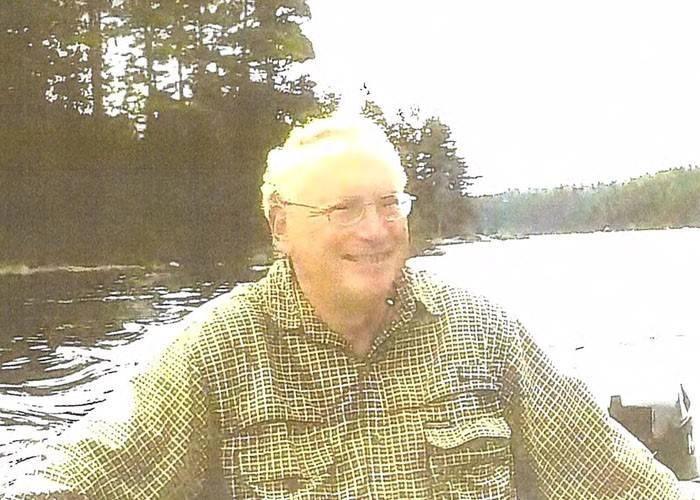
Gary Grierson (BCom 1965 UC)
Remembering Professor Helleiner
In 1963, I was in second year Commerce and Finance. There was a professor and a course I have never forgotten: Professor Helleiner and European Economic History. The lectures were delivered in the newly opened Sydney Smith Building. The scuttlebutt was: Don’t skip lectures. The exams are based on them and they are usually entertaining.
The lecture on medieval agricultural ploughing methods is memorable. The professor chalked an elaborate diagram on the blackboard. We obediently reproduced it in our notes. He finished the drawing, turned to the class, and said: “That is not how they ploughed. I will now explain how they did it.”
One question on the Christmas exam was: “When the moon over London waxed, the moon over Amsterdam waned. Discuss.” There were complaints from students who were uncertain about the meaning of the words “wax” and “wane.”
Professor Helleiner began his first January lecture something like this: “Some of you should be ashamed. How could you not know that when the moon waxes it shines more brightly. And when it wanes it shines more weakly, appearing to become smaller, because there is a decreased area of its surface illuminated.”
Then the exam results were delivered. He called out a name. That person was required to come to the front. The professor handed over the marked paper, announced the mark and commented. He began by calling down several high achievers. (I have used fictitious names.) “Dorothy Hughes.” She came forward. “93%. Excellent.” “Stuart Barnes. 91%. Congratulations.” Several more students with high marks were called down and congratulated. We applauded. The professor then called out “Barry Ashby.” A student reluctantly came forward. Professor Helleiner handed Barry his paper and announced: “11%. Garbage. Barry was followed by another student who was scolded: “14%. Why are you even here?” We applauded as loudly for the 11- and 14-percenters as we had for the 90 per centers.
The Christmas exam hand-backs were so entertaining that in third year, I returned to the second-year class lecture when the exam papers were returned – just to watch the show.
Some of Professor Helleiner’s teaching techniques would not be acceptable today. Nonetheless, for me, they were a cogent lesson: Humour is an important element in effectively holding the attention of your audience. I never missed one of his lectures. And I got an A on the course.
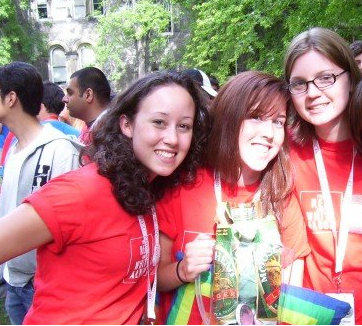
Susan Fine (BSc 2019 UC)
When I moved to Whitney Hall, I was the third (and final) sibling to have lived in Falconer House, and on move-in day, had the help of my older brother and sister. Coming from Nova Scotia, it was a big move for me, the baby of the family, and I had forgotten to pack my cell-phone (a classic Samsung flip phone), and my computer (a desktop, of course) had not arrived yet, meaning I was temporarily cut off from my old friends back home. I was nervous and ready to shut myself into my residence room for the time being. My sister was busy with frosh week duties, and my brother, who had already graduated, was set on helping me make friends. I remember walking up the third-floor hallway, and him deciding that I should knock on the door of a double room to try and make two friends at once. When I resisted, he knocked on the door for me and then ran away, leaving me with no options but to talk to the two girls who answered. Little did I know that 16 years later these would still be two of my closest friends who I am so lucky to have in my life! To this day, we have a group chat called “Thank God for Rob” (my brother who initially forced a friendship that would shape my adult life). This is only one of the many moments that defined my time at university – but it is one of the first and fondest memories I have of UC.
Tove Rasmussen (BA 1986 UC)
Hutton House, Sir Dan’s: International Learning
I arrived at Sir Dan’s residence hall at the end of August in 1981, having flown from little Victoria on Vancouver Island. I was assigned to Hutton House, one of the houses within Sir Dan’s. As I settled into the large, double room in the basement, I met my fellow housemates in my room, the halls, the common room and at Ferguson Dining Hall, fondly known as Fungus.
The first evening, we walked down Yonge Street, full of mohawks, colored mohawks, leather and head shops – a far cry from the conservative tweed and antique shops in Victoria back then.
My roommate’s sister was in the U.S. Foreign Service, following in the footsteps of their dad. So, the bombing of Beirut is indelibly fixed in my mind, together with the image of her office ceiling crashing onto her desk. Fortunately, she was elsewhere. Later on, she visited, and I was riveted during our lively discussion of politics while drinking my first Guinness. Practically a meal for me then.
In our house, we had two vibrant young, dark- haired men with similar builds – one Jewish, the other second-generation Palestinian. Given the conflict going on, I was mortified that I mistook one for the other for several days.
Over time, I noticed one of the psychology students would initiate discussion on the Middle East when both sides were in the common room. Voices rose, tempers flared and the room divided, with the observer taking in the dynamics. Eventually, he slipped away unnoticed.
The other psychology student was from Greece – with some likeness to Greek philosophers of ancient times – long, wild, curly hair, with unique viewpoints and universal questions. One day in late autumn, together with our Palestinian buddy, we tore off to see The Good, The Bad and The Ugly of Clint Eastwood fame. It was showing at a creaky, second-floor, second- run theatre, quite a bit west on the Bloor subway line. What a classic movie and what fun!
In the all-male House next door, one fellow from China used to bring the latest electronics back from Hong Kong to those who paid him. Each January or February, the whole building of Sir Dan’s, it seemed, would celebrate Chinese New Year. The last time, I remember ending up on the roof with a few friends.
As I look back on those times, I realize that I studied the politics and recent history of many parts of the world. However, I was learning the reality of culture at Hutton House.
Those days of joy and of angst are in my heart – and I hold out hope of seeing many of my old Hutton friends once again.
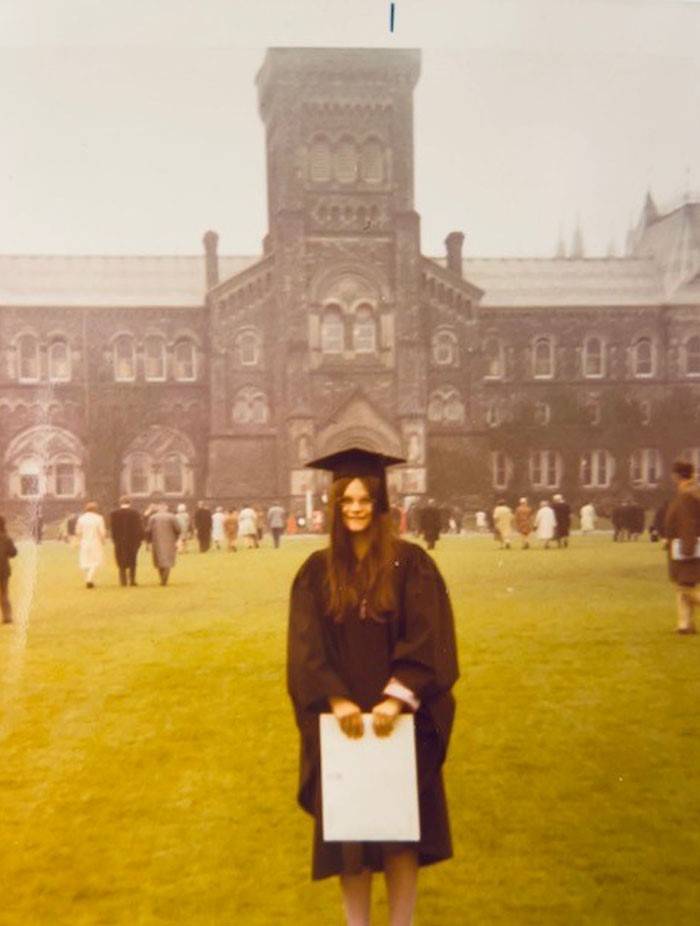
Dr. Christine Overall
(BA 1971 UC)
My Story About UC
When I began my postsecondary education at University College, I was the first person in my family to go to university. Like all my relatives, I’d never met a professor, sat through a lecture or even set foot on a university campus.
I’d applied to University College because it was, at the time, the only college with no religious affiliation. I didn’t know much, but I did know I was no longer a believer.
I’d been raised in the Anglican Church. Until I lost my faith in my mid-teens, I attended church almost every Sunday. Now I was an atheist, but I still loved the aesthetics of churches, especially old ones: the architecture, stonework and magnificent windows.
In late August of 1967, I received a letter telling me to register at University College. I took a bus to Warden Station, then the subway to Bay and walked from there.
I had a map – on paper of course – to guide my journey. It was a little confusing, but eventually the directions led me to an imposing stone building. It had all the features I admired: a huge wooden door framed by a stately and intricately carved alcove, massive stone walls, tall arched windows and a tower with a turret.
I loved it, but clearly, it was a church. My map had misled me.
For some time, I wandered the area. The directions said that splendid, church-like building was University College. Perhaps the College was inside a church? But wasn’t it supposed to be entirely non-religious?
With some trepidation I approached the enormous front door, heaved it open, and entered to find the interior even more glorious than the outside. Beautiful wooden walls and bannisters. Sweeping staircases. Old tile floors, worn hollow by the passage of feet.
And just down the hall was a door labelled Registrar’s Office. I walked in and confirmed that I truly was in University College.
So began my transformative undergraduate education -- which diminished, somewhat, my lack of worldliness. Today I continue to be inspired by the UC building and its historic grandeur. And I’m glad it isn’t a church.
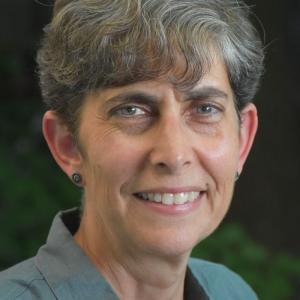
Professor Shauna Van Praagh
(BSc 1986 UC)
In the fall of 1984, Frank Iacobucci was vice-president and provost of the University of Toronto. After delivering an orientation address at “Fungus” (Howard Ferguson Dining Hall) to the first-year class at University College, he leaned over to the 19-year-old UC Lit president seated next to him and asked, “Was I OK?” It was remarkable for a university provost to ask an undergraduate student for evaluation and feedback.
It was a striking and memorable way to convey to a student in a position of responsibility that effective leaders don’t stop questioning, trying to do their best and communicating with others.
I was that student. Our conversation that evening led to me being asked to serve as student member on the Academic Affairs Committee. I gained valuable experience in university governance and I found a mentor who showed me how effective leadership requires sensitivity, care and checking in with people to make sure you’re on the right track. Two years later, with Frank Iacobucci’s encouragement, I chose to follow my BSc from UC with the study of law at U of T.
Almost four decades later, as a long-time law professor, I finished writing a book focused on Frank Iacobucci and the ways in which we tell stories, support others and make contributions to our communities.
Who are the “we”? We are those with what Frank refers to as “funny-sounding names.” We are those who share our lives with individuals who teach us lessons and shape our ideas. We are those who live out both grand aspirations and everyday moments of concrete connection and care. All of us are trying to be and do “OK.”
The crossing of paths can make all the difference. A small story of how the presidency of the UC Literary and Athletic Society intersected with the vice- presidency of U of T illustrates the intergenerational quality and possibilities of the university. It takes me back to UC every time I reflect on how to support my own students and map out my own projects. And it serves as reminder of the precious sharing of space and time that marks life and learning at University College year after year.
(Partly excerpted from Building Justice: Frank Iacobucci and the Life Cycles of Law (forthcoming 2022, University of Toronto Press)
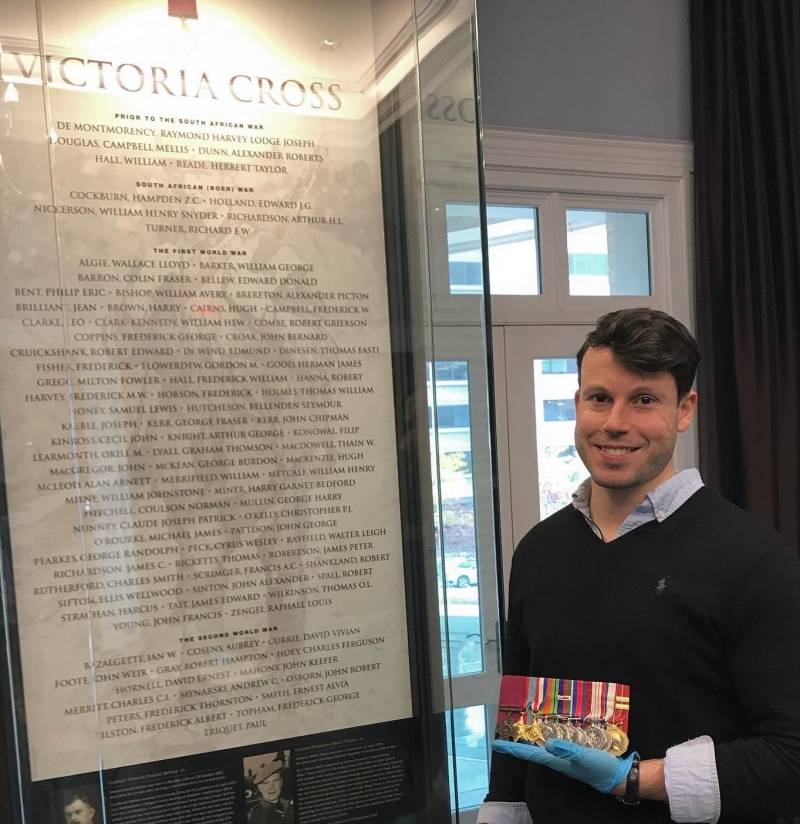
Ryan Goldsworthy (BA 2010 UC)
I attended the University of Toronto from 2006 to 2010 where I earned my Honours Bachelor of Arts in History and Religion. I graduated in 2010 with high distinction as a proud alumnus of University College. I originally transferred to UC in 2007, as I was drawn to its incredible history and architecture (itself a National Historic Site of Canada), and because of the college’s iconic stature and reputation at the university. I lived in UC’s Whitney Hall from 2007-08, which was when my life and my academic career truly began to flourish.
Several of my most influential professors and mentors, including Professor Ian Radforth and Professor Peter Richardson (a former Principal of UC), were based in University College. These same professors also taught some of my most cherished courses in the classrooms of UC. At UC in the fall of 2009, I took the most influential course of my undergraduate career, HIS430H: Canada & the World Wars. HIS430H, a genuinely inspiring and enlightening seminar, helped to create a foundation of knowledge which guided me through to my graduate education and even into my professional career. This seminar effectively finalized my determination to pursue Canadian military history in my master’s degree and ultimately as a vocation. UC, of course, was a fantastic setting for such learning, as many of the Canadian officers and airmen of the First World War had trained at the college and on Front Campus.
Since 2016, I have served as the museum director and curator of the Royal Canadian Military Institute (RCMI). Located at University and Dundas (not far from U of T), the RCMI is one of Canada’s oldest museums and is the largest military history museum in Toronto. Throughout my museum career, I have built upon many of the ideas and content that I was first exposed to at UC. I have curated numerous exhibitions and organized academic symposiums, lecture series and commemorative events, all centered on Canada’s military history. Over the past several years, I have also supervised many University of Toronto students at the museum -- it has been a poetic privilege to mentor these U of T students and future alumni. Ultimately, I would not be where I am today without University College, and I often think on my time there with great fondness.
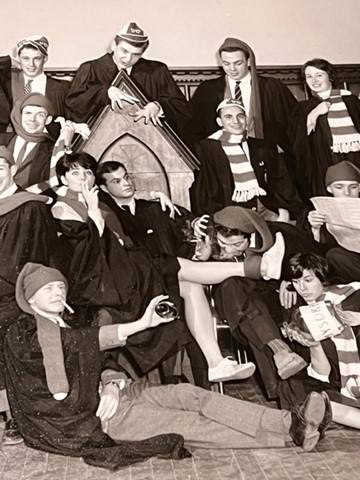
Diana Bennett (BA 1965 UC)
Those Were The Days
We thought they’d never end … and now, looking through dusty envelopes of photos I am faced with the fact that half of my friends in this shot are dead … Eddy Greenspan, Philip Epstein, Michael Landauer …The one with the cigarette in the lower left, Leonard Waverman, is very much alive. Fortuitously, we reconnected with each other when I had the delight of serving on the first Alumni of Influence Awards Committee, begun by Donald Ainslie, Principal, 2012 to 2019. Leonard, Eva, Spencer and I have been friends ever since. He doesn’t smoke! I think he borrowed it as a prop, just as I picked up that coin collecting MYSORE bottle. I’m in the lower right.
So, this was the annual portrait session of the UC Literary and Athletic Society. In that era, we were probably not much in terms of either attribute but we had a passion for student government and we had a place to hang out –– the Junior Common Room. All of our names are etched in gold on the panelled walls. Nice. Note to self: Bring the grandchildren down to campus.
Did we have fun? I can’t remember. It all seemed seriously important. We cared about campus issues and world issues. We marched to allow women into Hart House, to oppose the Vietnam War and to debate vigorously at Model Parliament sessions. We believed we could influence change with our voices and our actions. Perhaps our idealism has translated into over five decades of prosperity. We have been fortunate -- those of us who are still alive!
But I wish that I had more photos. Visuals are critical prompts to summon memories. Perhaps this story initiative will bring forth treasures. I hope.
Mark Elliott Shapiro (BA 1970 UC)
Building Bridges
Bridges
The beauty of bridges
Is where they lead
Is the valleys
And rivers they traverse
University College
Was my bridge
That joined
The world I had known
Through my family
My community
My synagogues
My Hebrew day school,
The Associated Hebrew Schools of Toronto,
And my Hebrew day school,
Community Hebrew Academy of Toronto
The world of the Talmud
Of Hebrew literature
Of Jewish history
With the world
Of Shakespeare,
Dickens, George Eliot,
Mark Twain, Homer,
Molière, Dostoyevsky,
Camus
It joined Hayyim Nachman Bialik
With Robert Frost and T.S. Eliot
It was my privilege
To travel that bridge
I have been blessed
***
First written on March 14, 2022 in Beersheba
© 2022 Copyright Mark Elliott Shapiro
Dr. H. Ian Macdonald (BCom 1952 UC)
My parents both left school at age 14 and came from Scotland to Canada, each on their own at 16, before World War One. As a result, I was not exposed at home to any knowledge of universities, although I did absorb the Scottish respect for education, and my high school teachers were always speaking about universities. In Grade 13, two in particular, Betty Bealey in English and Bud Page in Latin, were both proud UC graduates and pushed me strongly in that direction. On a Saturday morning in early 1948, they arranged for me to meet the Registrar, Professor W. J. McAndrew, in his UC Office. Other than playing hockey in Varsity Arena and participating in track and field events at Varsity Stadium, I had never been on the campus. Upon entering the front door of UC, I discovered everything I had always imagined a university to be and it was an immediate love affair.
Fast forward three-and one-half years and I received a request to meet with Principal Jeanneret. My immediate thought was: What could I have done? Forever warm and welcoming, he said that the College wanted to encourage me to apply for a Rhodes Scholarship. In all my innocence, I replied: “What is that?” I often think of that when I meet students today who have been studying, since high school days, how to win a Rhodes. The UC Alumni executive gave me a wonderful send-off at a dinner in Hart House where I had the great privilege of sitting beside the chair of the Department of Political Economy, Professor H.A. Innis. I recall him saying to me: “You will find Oxford to be a great paradox, both a place of permanence and a place of constant change.” I observed that to be true throughout my three years at Oxford.
Upon returning in 1955 to teach Economics at the U of T, I moved into the Sir Daniel Wilson Residence as the Don of Jeanneret House. During that year, I received my second formal call to the Principal’s office, this time to be invited to be the Dean of Men in succession to Claude Bissell, who was leaving to be president of Carleton University. In the process, I became a colleague of Mary Quayle Innis, who was the Dean of Women and the widow of H. A. Innis. Principal Jeanneret moved into the Dean’s House (now Bissell House) in University College, but when he retired in 1959, I became a resident of the house along with two other young professors. The following year, they moved out when I was joined by my bride, Dorothy, for the next five years. What a journey to now be part of the fabric of University College, the very building that I cherished so dearly.
Dorothy and I often shopped in a small grocery store on the then-Classic Avenue, now the site of Sidney Smith Hall. There we met an elderly lady who had spent all her life on Classic Avenue but had never laid a foot on the campus. We invited her for a tour and tea in the Dean’s House where she could discover the magic of the University College building as I had when my UC saga began.
Abbey Lynne Kachmar (BA 2017 UC)
It was February 2016, and my co-room head, Debbie, and I were working late into the night on our room for the following night’s Fireball. The theme was The Magic of Fiction and we were to transform the UC 163 classroom into Narnia. Our main task was to drape sheets of sheer white fabric off the projector, creating a winter canopy that would cover the entire classroom. This was no easy feat, and out of pure frustration, I was beginning to wonder why I dedicated countless hours to something as fleeting as decorations for one room and for one night.
We made a miscalculation on the amount of fabric we needed for the entire room. Panic stricken, Debbie ventured all the way to Queen West to get more. When she came back, she found Waseem walking home from his shift at work and brought him in to help. “LOOK WHO I FOUND!” she shouted across the hall. My heart literally skipped.
Although Waseem and I were both U of T students, we worked together at Ryerson as catering assistants. For lack of a better description (and word count), Waseem was my work crush, and we were in the middle of figuring out if we were something more.
That night, Waseem helped Debbie and me until we were all too tired to stand. Call it a coincidence, call it kismet, or maybe call it the magic of Fireball, but Debbie finding Waseem on his walk home was nothing less than pivotal.
Fast forward to July 2020: Waseem lured me to U of T on a scavenger hunt. I eventually found him standing in Sir Daniel’s Quad outside the hobbit door.
“I feel like everything was meant to be with us, isn’t it? Even this place. This is where Debbie found me and took me back to UC to see you. It wasn’t even my normal route; I usually went a different way home. …” (It was a lot more eloquent when he said it, but I was too busy blubbering to soak in his every word for recounting).
Then, he pulled a ring out of his pocket and asked me to marry him.
Spoiler alert: I said yes, and we are currently living “happily ever after” with our three cats.
Professor Alexander Leggatt (BA 1962 UC)
Two anecdotes about how members of Loudon House restored dignity to the campus.
1. The year was 1959. Sidney Smith Hall was under construction, across the street from the Sir Daniel Wilson Residence. The construction site, an entire city block, was surrounded by a bare plywood fence. Some of us in Loudon House decided the fence lacked something, so we decided to write on it the passage from Milton’s Areopagitica that runs around the Great Hall in Hart House. Two mathematics students worked out the logistics, and under cover of night the whole of Loudon House, armed with lumber marking pencils, set to work. We were interrupted by the police, who took two Loudonites to the local police station but couldn’t figure out what to charge them with. The rest of us returned, and with the help of nurses from a nearby residence, finished the inscription – adding a note that Areopagitica is Milton’s argument against censorship and in favour of freedom of speech.
2. There was time when there was no respect for Victorian architecture, and University College was regarded as a monstrosity. This was reflected in the University’s treatment of the building: The lighting over the magnificent main entrance consisted of three naked lightbulbs. Some of us in Loudon House decided to protest, and (this being when Moffat Woodside was Principal) we hung a sign over the lightbulbs: “Uncle Moffat’s Pawn Shop.” Shortly afterward, the lightbulbs disappeared.
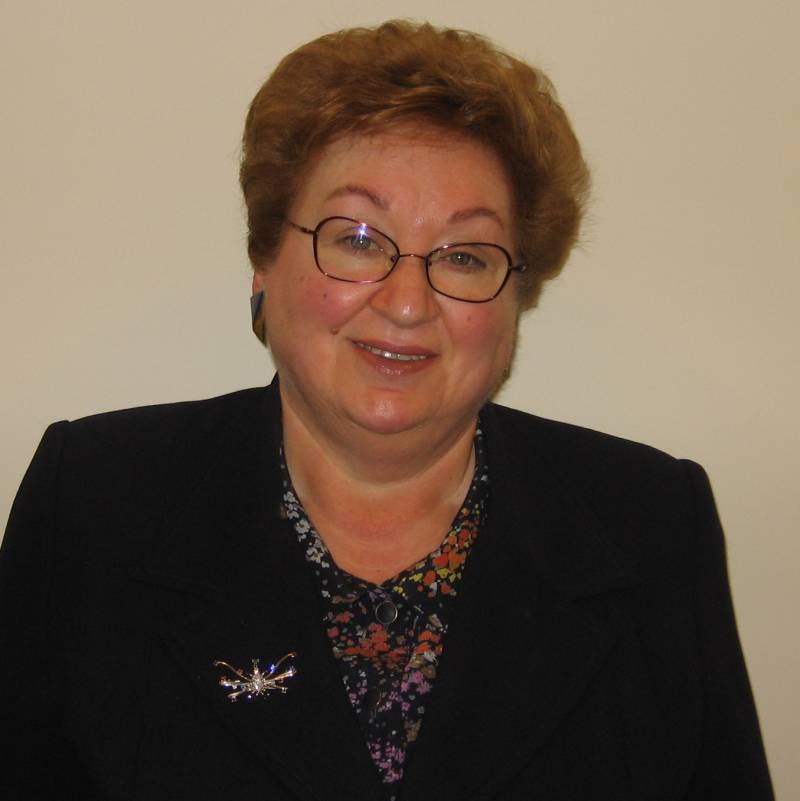
Linda Silver Dranoff (BA 1961 UC)
I was one of the lucky ones. In an era when few men and even fewer women attended university, I was accepted by University College. Even then, it was the most inclusive and diversified among all the colleges of the University of Toronto. It was the 1950s and women were discouraged from higher education and employment outside the home. We were encouraged to make marriage our life’s goal. But that was not why I went to university.
I welcomed the chance for an education. I was able to earn enough in part-time jobs and summer employment, including working in the university library, to pay the tuition and expenses of about $250 a year. I was the first girl in my family to attend university. I lived at home, as most of us did at that time.
It was an exceptional time in my life. I drank in the intellectual atmosphere and found the courses to be inspiring and interesting. The professors were the best —Donald Creighton, Ramsay Cook, John Saywell and more.
But the extracurricular activities advanced my education even further. I ran for the UC Lit. I tried out for and eventually was only the second woman to serve on the University of Toronto debating team. I wrote for The Varsity. I spoke at Model Parliament. I ran debates at local high schools where university debaters presented and promoted debating. I hung out at the JCR and got to know many fascinating people. I studied in UC’s hallowed halls.
It was a wonderful experience, those four years at University College at the University of Toronto, and it gave me a grounding that served me well my entire life.
In acknowledging UC, I recognize that they have acknowledged me. In 1961, as I was about to graduate, there was a year-end dinner put on by the University College Literary and Athletic Society. I missed it. I didn’t even realize that it was an awards dinner. I was at the library studying, and when I left that evening, I ran into a fellow student who had been there, and he told me I had been given an Honour Award – an engraved pewter cup. I was mortified because of my absence.
I more than made up for this lapse about fifty years later when, in November 2012, I was honoured by University College as one of only one hundred in the inaugural group of living and dead “Alumni of Influence” since the founding of the college in 1853. Not only did I attend, but so did eighteen family members and friends!
*Linda Silver Dranoff is a 1961 graduate of University College. She went on to become a lawyer (Osgoode 1972) and practise law in Toronto. She is also an author, most recently of her memoir and social history of the women’s movement, Fairly Equal: Lawyering the Feminist Revolution.
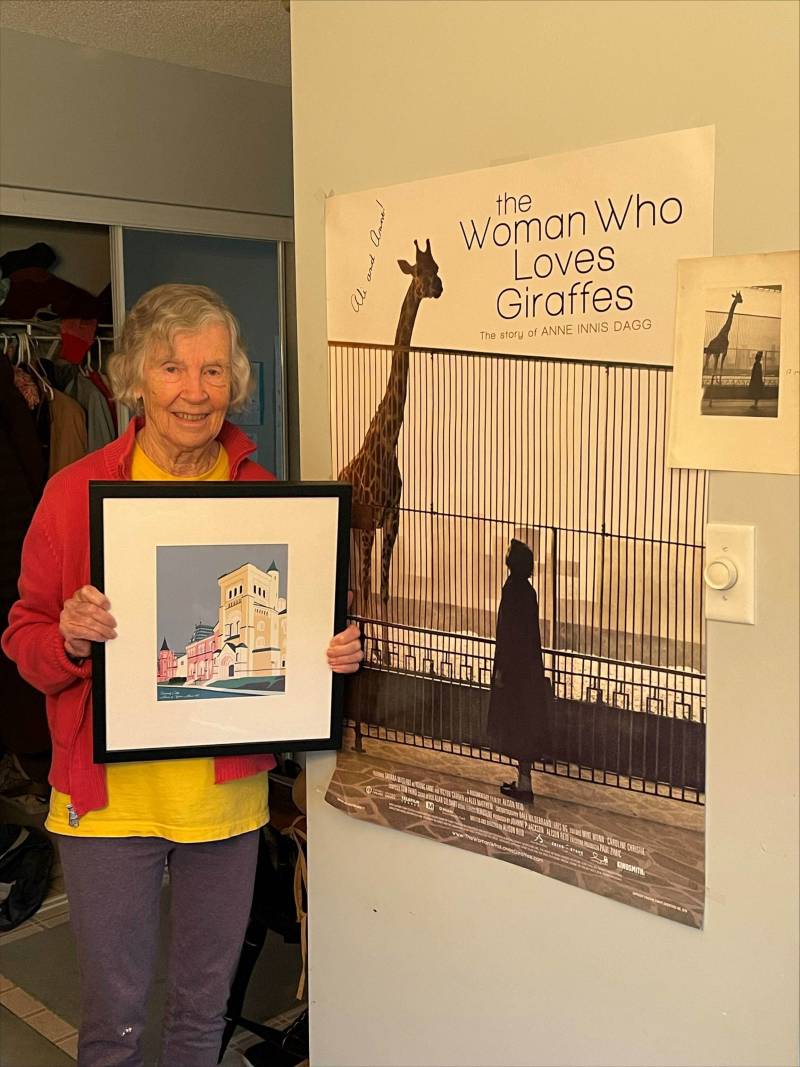
Dr. Anne Innis Dagg (BA 1955 UC)
Hi, University College. Yesterday, I visited you and Innis College and had an amazing morning. This brought back strong memories. I would like to tell friends from long ago about my odd marriage.
My friend Ian Dagg and I planned to get married. I had been studying the behaviour of giraffes in South Africa for a year while Ian was working in Europe. We agreed to meet the next summer in England. My mother decided to fly to England for our wedding which made it even more exciting!
When I arrived by ship in England in 1957, I found that my mother, Mary Quayle Innis, was still in Canada. She was working at the University of Toronto as Dean of Women and now looked forward to a change. A few days later, she arrived by plane and we rented a room together. While we waited for Ian to arrive, we rented a car and I drove us around England. Mother had never learned to drive as we had never had a car in our family.
I had trouble keeping us safe, given that I do not really know my right- and left-hand sides. So, I drove slowly up and down roads where there were few cars. I finally came to a car parked that I recognized from Canada! Inside were two men with whom I had worried about birds and beasts for years while studying biology at the University of Toronto! I parked a small way behind their car and then walked to where they were having tea. I said something exciting, I cannot remember what, but it made the two men leap up aghast until they realized that I was their former buddy. Then we talked a bit and laughed a lot and then we drove on. The other two, Bob Bateman and Bristol Foster, were just beginning a long study of large animals around the world and becoming world famous with all they have since discovered. I talked about the giraffes that I had known in Africa.
My mother died long ago, but last summer I encountered Bob and Bristol in Western Canada. They were sitting with wives and friends in one of the magnificent parks in British Columbia. We had hugs with them and with their wives. Then we talked for hours, renewing olden times so long ago! We ended by laughing about the large number of insects that we all should have been able to name with their scientific names, but which most or all of us did not know at all! Probably the teacher did not know either!
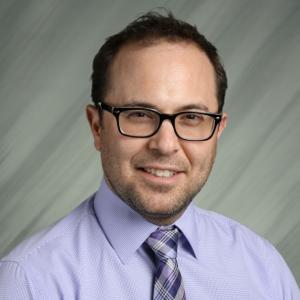
Michael Frankfort (BSc 1999 UC)
Even before attending University of Toronto as a student, I often visited the St. George Campus while in high school, and, in particular, I spent a lot of time in and around University College. As the actual building was located centrally in terms of the campus itself and my classes, it was only natural that I spent a fair bit of time hanging, studying and socializing at UC. There are many things positive things that I could discuss; however, I am going to narrow it down to three (for the moment).
The UC Library became the unofficial spot for science studying and collaborating with others in my courses. There was always some combination of the same group of us, the same group that seemed to find the best seats at Convocation Hall for classes, that would gather and study. As well, I tended to do some of my best studying at the UC Library. I would find a relatively quiet study space, take off my shoes, make sure I had my snacks and some water, plug in my headphones and work on my memorization for tests and quizzes. There were definitely times when I was actually able to take a nap. The UC Library for me became one of my go-to spots for studying and unwinding a bit after and between classes.
One of the other great spots to get some good studying in was when I was “somehow” able to get into an empty classroom in the college itself. To be honest, the ones in the basement were the best as they were small and often available in between my classes. What I really was looking for in this case was some kind of large area in order to work on math calculations and/or science processes. The blackboards in these rooms were great, at least two or more of them, and I could easily spread out my flow charts, graphs and other types of materials. I was always mindful of the class changeover time and if another class were to come in, I would appropriately depart in search of another good spot.
One of my favorite parts of UC was the great relationship I had with the College Registrar’s Office. At the time, my direct communication was with Eva Mandrapilias, assistant to the Registrar & co-ordinator of student awards, now retired, who helped guide me through my course selections into my second, third and fourth years of undergraduate studies, as well as mentoring me through my post-undergraduate decision to apply to the Faculty of Education. It was really important to me that I was able to make a personal connection with someone who was able to work with me on my academic decisions. Prior to Eva retiring, I brought my classes down for a tour of the university and we would always pay a visit to her to say hello. Even though my later academic studies were at another institution, U of T and UC continue to hold these important memories for me and I will usually visit every time I am downtown Toronto.
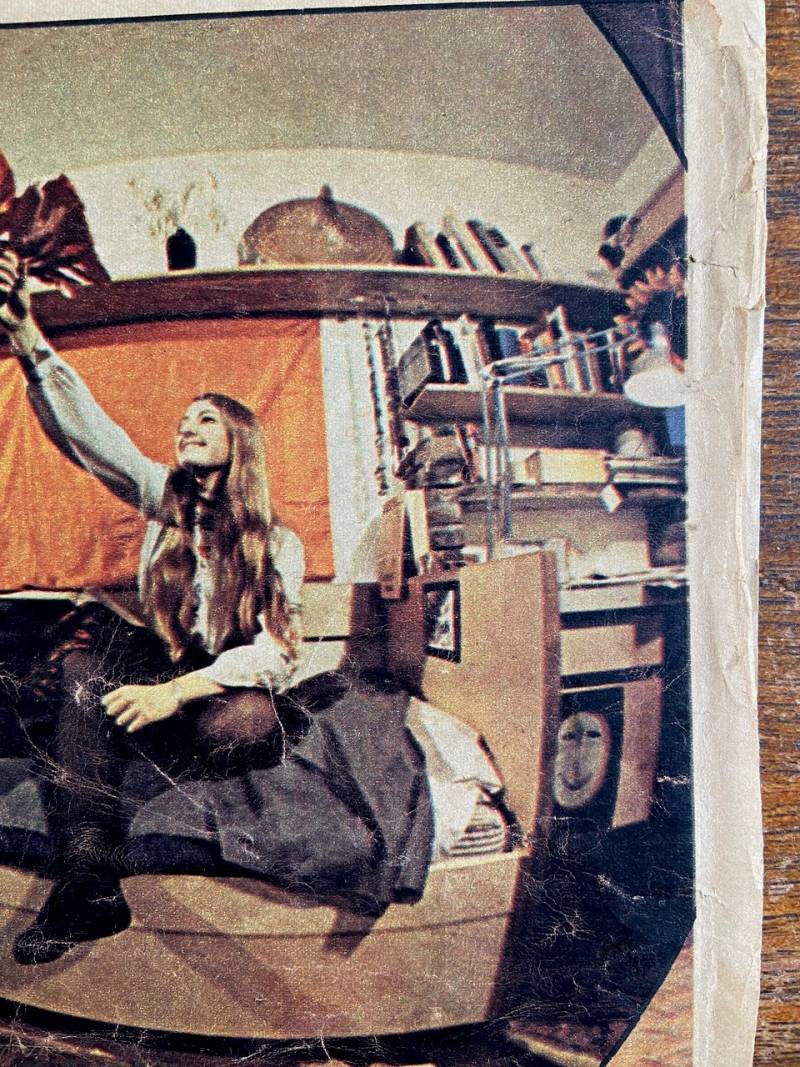
Dr. Miriam Clavir (BA 1969 UC)
Have you ever listened to Simon and Garfunkel? I’ll definitely wager yes. Memories and music are both emotional, and I want you, too, to experience a UC event I attended over 50 years ago.
https://sites.google.com/site/letssingoutctvtv1966/
Yes, in 1966, Simon and Garfunkel gave a concert in UC’s JCR/ Junior Common Room. I was transfixed, especially by Bridge Over Troubled Water: the amazing, beautiful, clear-voiced harmonization from two not- yet-quite-famous singers scarcely older than us in the audience.
What a concert! Outta sight! Simon and Garfunkel blew my mind ... yours, now?
Another UC memory: The years of my Honours BA, 1965-1969, were key, powerful times in protest movements and I was part of them, as were many other UC students. We listened, we discussed, we argued, we marched.
Here’s an item in the U of T archives: “1965, poster created March 1: U of T Friends of SNCC (Student Nonviolent Coordinating Committee). John Lewis (injured in Selma, Alabama) replacement: Lafayette Surney, UC West Hall.” The late John Lewis was a founder and leader of SNCC and a towering figure throughout his life in the fight for Black civil rights. UC supported its student body with a wide range of opportunities for active learning.
1965-69 was also the height of the war in Vietnam and many UC students, including myself, were part of this protest movement. Anti-war organizations such as SUPA (Student Union for Peace Action) and SDS (Students for a Democratic Society) were active on campus and off. The news, meetings, teach-ins, sit-ins: all were covered by the UC Gargoyle as well as The Varsity. The Gargoyle still describes itself as “a paper that believes sometimes you should be angry, and sometimes you should be loud, and if you have not had a voice before, you deserve a voice. We don’t give print space to bigots and we don’t feign neutrality on issues of social justice.”
Right on!
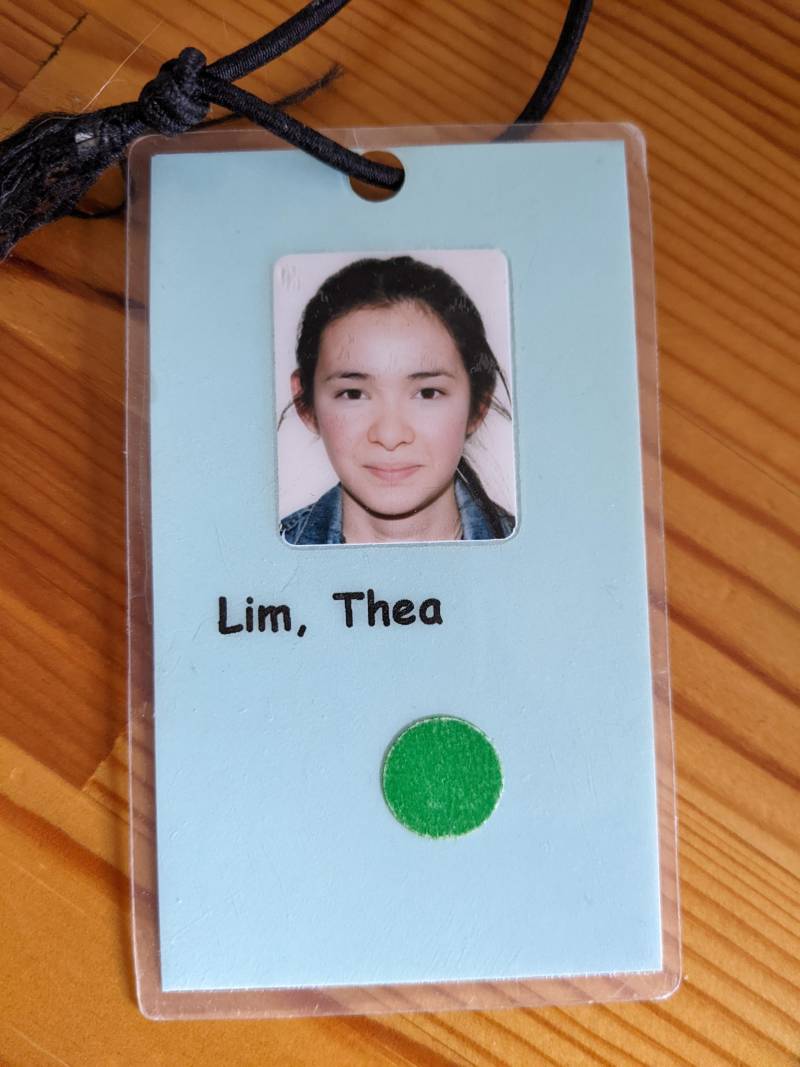
Thea Lim (BA 2004 UC)
In my final year at UC, I took Gad Horowitz’s class, The Spirit of Democratic Citizenship. A friend had taken it the year before and described it as “life- changing,” but neither the course title nor description gave much away, and even my effusive friend struggled to articulate the class’s subject.
Once a week, fifteen of us met in a room older than all of us, and as the trees in the courtyard dropped their leaves, then grew them back again, we learned Gad’s theories. He taught us about how when we read, we are not actually reading, but remembering the words, based on the last time our brains accessed them. He taught us about The Pause, that infinitesimally small moment between when we see something, and when we categorize it, maybe as “rose,” “toilet paper,” or “woman,” and how we might elongate that pause to better approach WIGO. That is, What Is Going On, which was Gad’s term for objective reality, beyond the skewing of perception, which none of us, with our decades-old biases, can ever really grasp. (To this day, I find it strange there’s no real term for WIGO, other than the one Gad invented.)
The class was off-the-wall, bizarre, and yes, life- changing. Gad would regularly mispronounce words on purpose, just to see how we’d react: “innovative” became “in-NAW-va-tive” and “awry” was “ari.” His speaking notes were a stapled sheaf of yellowing paper, and onto each sheet he’d taped addendums and corrections, until they were the length of his arm. The implications of his lectures were vast, ranging from how brains make meaning to our spiritual wellbeing to how racial discrimination becomes systemic.
I still think about what Gad taught me all the time, not just in my work, but when I’m walking down the street. And he taught me something I strive to bring into my own teaching: the pedagogical power of weirdness. While I’ve never had the guts to mispronounce any words, Gad showed that a willingness to be wacky invites students to embrace uncertainty, which is one of the greatest gifts a teacher can impart. When I’m teaching, I try to trust, as Gad wholeheartedly did, the bravery, hopefulness and openness that all students bring, and that they learn to conceal over the years, until a generous teacher shows them it’s safe.
Tim Southam (BA 1984 UC)
1980. There was this word: Stagflation. Our attempts at sharin’ had become too expensive and it was time to get behind trickle-down. It was decided that our way out of the doldrums was to protect the money. Interest rates shot up, a magic circle was drawn around the money and people everywhere were left wondering how to get inside it. Even just a little bit inside it. Those, as I recall them, were the 1980s.
I later learned how to fight this lopsided ideology, but at the time I remember mainly being seized by the urgency of getting a job. My 18-year-old’s idea of how to do this was to scan the U of T calendar for a program I thought would telegraph a basic openness to the concept of money. There was renewed pressure on places like University College to get more skills-oriented. “Come on UC, interest rates are at 20 per cent. Knock it off with the poetry and get us over that wall.”
Economics had a ring to it. I wasn’t sure I would like it, but it had a ring. So that’s what I did, and not to overly dramatize things, it was a painful blur. As a reward I allowed myself one literature course a term. I loved those. They helped me get better at the one thing I’ve ever been any good at other than talking, which is reading. I met Hart Hanson, a UC student who had gone all-in on the reading and was planning to write for a living, which I found astonishing. In time I became a film director, which at its core is reading and then letting your imagination fly. Over the years Hart put me to work directing his fabulous television shows. Today I love to read, and I love to read for a living. Thank you, Hart, and thank you UC for hanging in there with the poetry.
Chelsea Kowalski (BA 2019 UC)
A Bouncy House Wedding
In Sept 2017, I was working as a residence Don and one of my students was in a new role on the University College Residence Council. She was hosting an event in the Sir Dan’s Quad, aptly named UC Fun Day, as part of a Welcome Week initiative to kick off the start of a new school year. UC Fun Day featured water balloons, a tug of war, bubble blowing, snacks and most exciting, a bouncy house with a slide. The event went well for whichever students could pry themselves outside on a Saturday afternoon. By 3 p.m., it was over, and I had stuck around to help clean up.
Unbeknownst to me at the time, a wedding was being performed nearby at the Hart House building, and the bride and groom, along with some of their wedding party, passed by our event. One of the best men approached me and asked if we could allow the newly married couple onto the bouncy house for some photos. It was a strange request that I honestly didn’t know if I had the authority to grant. I was simply volunteering my time there to support a residence student. But I couldn’t resist saying yes to a romantic gesture and pleaded their case to the residence life co-ordinator, my boss at the time. Thankfully (and unsurprisingly), he generously signed off. As the couple climbed onto the bouncy house acting the way all adults do in a bouncy house – like happy kids – I raced over to the sound system still set up. I plugged in my phone, put on Can’t Help Falling In Love by Elvis Presley, and watched this couple make a moment together that they would remember forever.
The best man was incredibly grateful and offered me $20 (a pleasant surprise for a university student) as a token of gratitude. I accepted but ended up giving it to my student, who was basking in the feeling of a residence- wide event gone well. I was more than happy at having complemented this couple’s magical day in a way that can only happen by jumping around in a bouncy house to the voice of Elvis singing, “Take my hand, take my whole life, too. For I can’t help falling in love with you.”
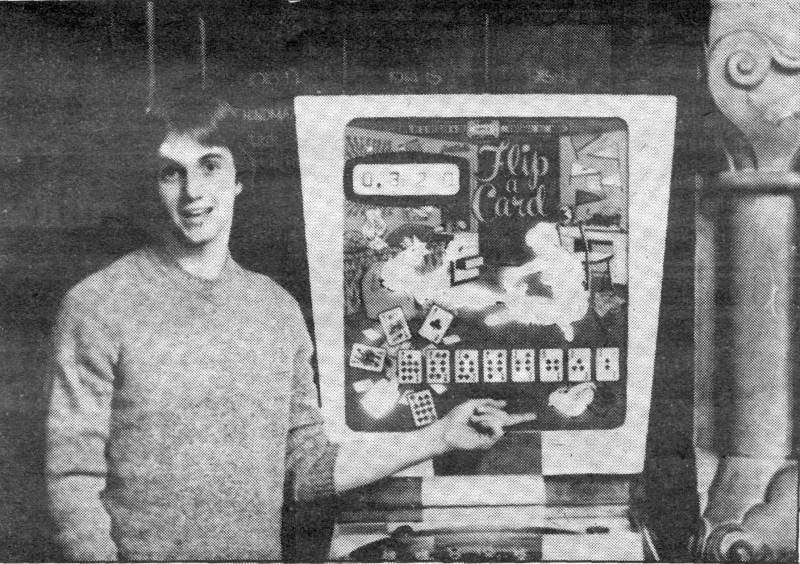
Hart Hanson (BA 1981 UC)
FAVORITE UC Memory
One memory? One memory out of thousands?
I considered telling a few anecdotes about my time as the overnight porter at Sir Dan’s – the gatekeeper who let people in and out of the residences between midnight and 6 a.m., but I figured I’d need written permission to tell those stories.
I washed dishes in Fung (Howard Ferguson Dining Hall), which is where I met Brigitte Kemper. (Very good story there.)
I was a chambermaid at Whitney Hall the summer of 1979. …
I worked on the editorial staff of The Gargoyle next door to a public washroom that was on an underground list of good places for cruising. …
I still have friends from those days at UC: directors, real estate developers, journalists, publishers, constitutional lawyers and politicians and more. I could tell stories on them but, like I said, some of them are lawyers.
One story? One story?
Okay … Anne Hutchison was the Dean of Women. She hosted tons of wine-and-cheese readings by famous writers at what was then called The Women’s Union. Among many others, I remember Earle Birney, Mavis Gallant (I got tipsy with her), Robertson Davies, Sharon Thesen, James Reaney, Al Purdy, Susan Musgrave, Michael Ondaatje, Milton Acorn, Sheila Watson – and Jack Hodgins, who was reading from his Governor-General’s Award-winning novel The Resurrection of Joseph Bourne.
Being from Vancouver Island, I was a huge fan of Jack’s. I had with me that day a very battered copy of his book of short stories Spit Delaney’s Island. It barely had a cover. He couldn’t stop laughing as he was looking for a place to sign his autograph.
Professor Frank Watt, my UC writing instructor, told Jack that I wanted to be a writer (I nearly had a heart attack) and Jack made the mistake of offering to read my work. That was the beginning of decades of friendship. Jack was to be my best man when I married (eloped with) Brigitte Kemper from Fung. He encouraged me to keep writing.
I repaid Jack for his generosity and mentorship by becoming a TV writer and naming a character after him. As a result, if you Google Jack Hodgins, a fictional forensic entomologist will show up before a factual award-winning Canadian novelist.
And that is my anecdote: it included love, friendship, literature and betrayal. Not bad for 400 words.
Thank you, University College.
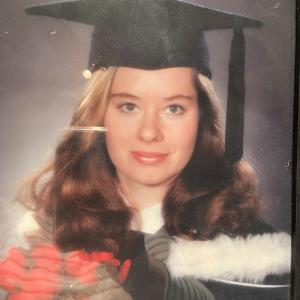
Nicolette Klemoff (BA 1986 UC)
Love of Languages - Memories of UC College
In 1982, my destiny, or so I believed, was to become a television broadcaster after graduating from Ryerson’s Radio and Television Arts program. When I was placed on their waiting list, I happily chose University of Toronto instead.
My parents had taken me travelling all over Europe as a child and as a young teenager. My mother was British, and I enjoyed many summers visiting family in England. One year, they decided to reconnect with friends who lived in Florence. That was the beginning of my love affair with Italy. We played games and ran along the beach in Viareggio, crashing through the waves and languishing under the hot sun.
Having studied French and Spanish in high school, it was an easy choice for me to enrol in the Combined Specialist Program (French and Italian) at University College.
Second year, enter the charismatic Marcel Danesi, Professor of Semiotics and Linguistic Anthropology, who was there to teach us first year Italian language and grammar. Professor Danesi’s enthusiasm about the Italian language was so great that he never stood still. His energy was palpable! This was a man who loved languages, loved teaching and truly loved life.
Over the next year, Professor Danesi inspired me, motivated and encouraged me, made me feel that I was capable and competent. I can say with all honesty that I was one of many students who came out of his classes feeling this way.
During the summer of 1984, I was fortunate enough to be able to complete my second year of Italian with Professor Danesi over in Siena, Italy, where I had the privilege of living in residence in that ancient city for six of the most incredible weeks of my life. My classmates and I travelled all over Tuscany that summer, enjoying everything there was to fill our heads with history, art and culture, and to nourish our soul with exquisite food. In July, we watched in awe and rapture the Palio, Siena’s five- century-old horse race in the Piazza del Campo.
Professor Danesi taught Italian so that it was learnable and interesting. Through his energy, enthusiasm, passion and kindness, he made us feel good about ourselves. I will be forever grateful to Professor Danesi for inspiring in me the confidence that I still have in speaking and reading Italian!
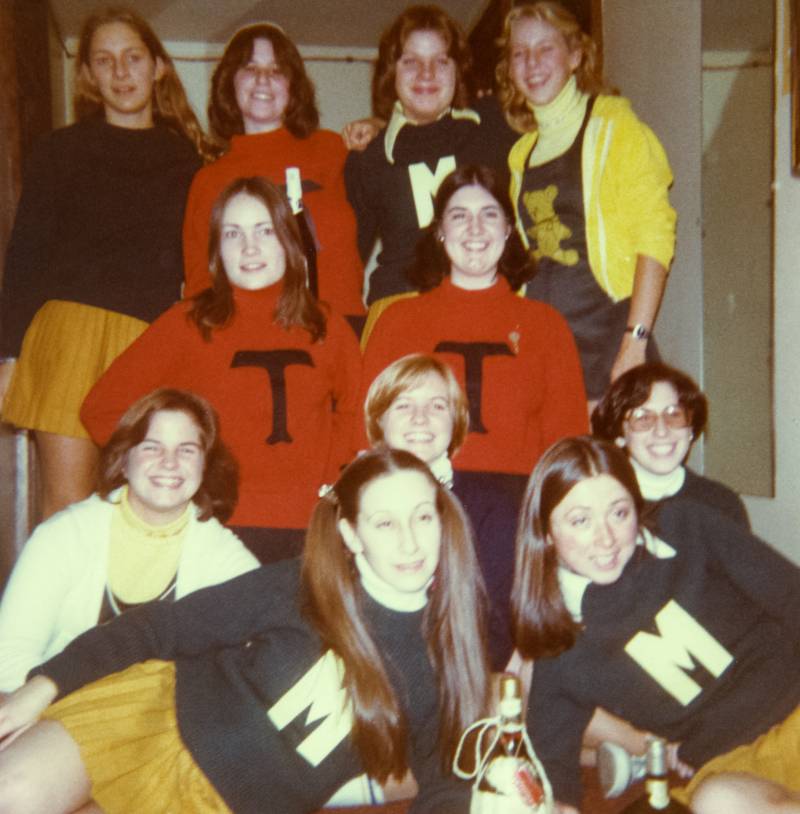
Schmoll, Ann Jost’s friend; Middle row: Lorna Clark, Sue Ropchan (Sue #4); Front Row: Ann Jost (sister of Leslie), Leslie Jost, Sue Lieff (Sue #3), Joanne Paull, Linda Lou Natzer. Ann and her friend were visiting Leslie and wore their own cheerleading uniforms.
Sue Ropchan (BA 1978 UC)
Let me take you on a trip back in time to the women’s residence, Whitney Hall, circa the late 1970s, specifically the third floor, Mulock House. I, along with 20 other women, shared one kitchen, one communal bathroom and one telephone. The morning bathroom rush required speed, determination and an abundance of patience, particularly to make the dreaded 8 a.m. classes!
When the telephone rang, whoever was closest would answer. Having a single phone presented its own set of challenges, particularly for incoming calls to Sue. I was one of five Sues on the floor. To distinguish ourselves, we were numbered in order based on our arrival on the floor. I was Sue No. 4. Perversely, we all seemed to just leave our first name and telephone number with the young men we would meet on campus. This, of course, provided a challenge for both the caller and the phone answerer with the following exchange taking place one evening:
“Could I speak to Sue please?”
“Which one?” in a voice knowing that this conversation was going to have legs.
“She has dark hair,” in a hopeful voice.
“They all have dark hair,” said like she had just played a trump card.
“How many Sues are there?
“Five,” said in a somewhat challenging tone. “I think she’s studying Chinese.”
“OK, that narrows it to three.”
And so on until either the young suitor gave up or he hit upon the right set of identifying characteristics.
With the benefit of hindsight, our attitude toward fire drills was grossly misplaced. As the bell always went off after midnight during one of the many house parties, instead of an orderly evacuation, out would come the electric fry pan, oil and popcorn. The floor would be filled with stories, laughter and the sound of popping corn until the alarm was silenced and we would return to our rooms.
The annual UC Halloween party was always an event that brought us together. One year, this disparate group of women of different backgrounds and studies decided we would attend as cheerleaders. As the UC Athletic Director, I was able to borrow cheerleader outfits from Trinity and St. Mikes (UC did not have any). We created a cheer, practised the choreography in the hallway and successfully performed at the party. A heady moment that none of us considered as a future calling, but pictures do survive to show us at the pinnacle of our cheerleading prowess.
Four years at Whitney Hall and, yes, graduation that led to a successful career but more important, great memories and lifelong friends!
Gail Dexter Lord (BA 1968 UC)
How UC’s Pop Art Festival Made Me Who I Am Today
Sometime in early 1965, I was sitting in the soul-destroying refectory in the basement of the then-new addition to our beautiful historic College, a space which I usually avoided, preferring to spend most days (truly) in the hallowed JCR. I remember being approached by an older student (I was in first year) who invited me to run for literary director of the Lit to transform its stodgy image. Case in point: the Arts Ball, a UC event since 1927 that no one wanted to buy tickets for any more – after all, this was the 60s! I won the election. (Or was I acclaimed?) Seizing the moment as an opportunity for cultural change, I developed the idea of transforming the failing annual dance into a pop art festival and turning the despised refectory into a supermarket.
With the power of the UC Literary and Athletic Society behind me and a budget of $1,500, I began to create partnerships – first with Dominion Stores who readily agreed to instal a real grocery aisle; with a wild group of U of T architecture students who re-designed and rebuilt the space; with OCAD students who created a magnificent female sculpture along the theme of “sex as a consumer product,” and with Toronto’s commercial galleries who risked lending art by some of Toronto’s most important artists (including Michael Snow’s Walking Woman), plus dancers and musicians to provide three days and nights of happenings, including films, panels and theatrical events selected by a roll of the dice.
I invited our federal minister of culture to open the event – Judy LaMarsh was a feminist icon. And, she agreed. I love reading her comment to the reporter for Macleans, “The prime minister never said there would be nights like this.”
I remember the Festival Pass – a fluorescent lime green design by the venerable Coach House Press. I would dearly like to have one if any still exist.
The Macleans reporter described how, once inside, “participants were greeted by a fusillade of projection lamps that ran TV commercials forwards, backwards and upside down; underground films and even shadows of the crowd.”
It was noisy and thoughtful, chaotic and collaborative, staged and spontaneous, all at the same time. We sold 1,500 passes and made a profit for the Lit. To quote the Gail Dexter of 1965, “It’s a Total Environment based on the principle of randomness.”
I am forever grateful to University College for its trust in students and their creativity and for giving me the opportunity to engage with cultural change, setting me on my life path.
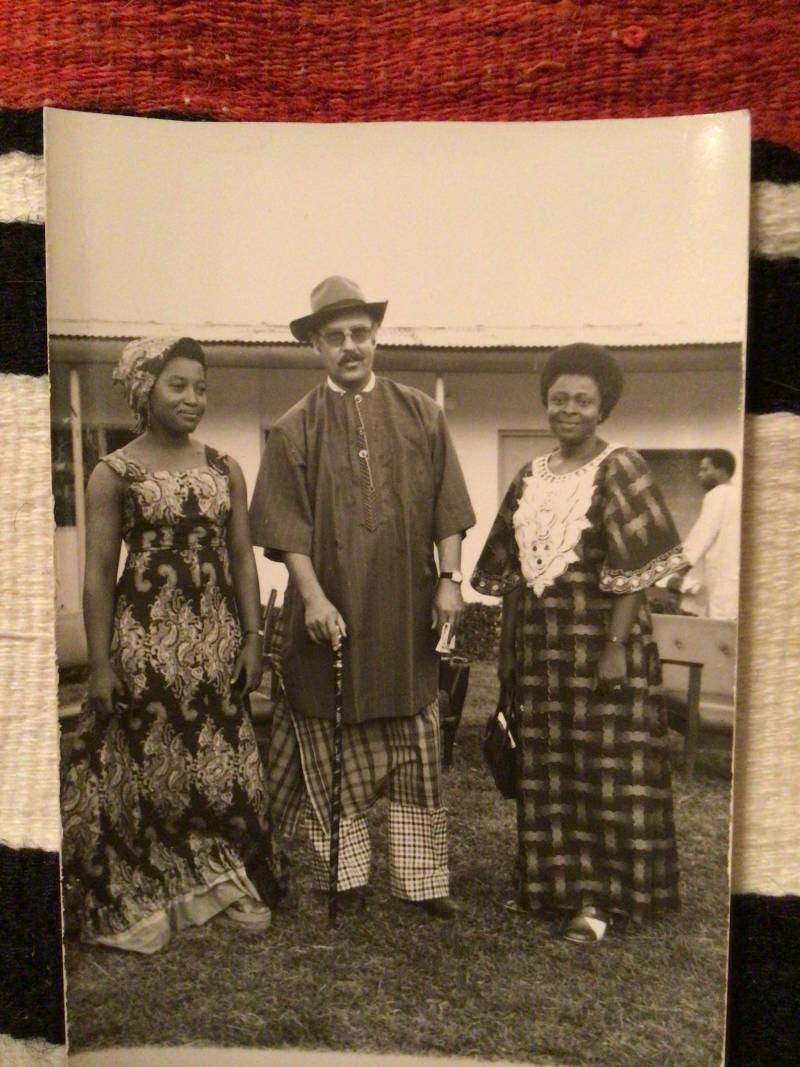
William (Bill) Emigh (BA 1956 UC)
When I was nine, my cousin Elizabeth Menary became friends with Eugenia Charles, who had come up from Dominica to study at University College. I was fascinated by what Miss Charles told me about her island when she spent some weekends with my family north of Toronto. Dominica seemed to actively encourage higher education for both men and women. Miss Charles once took me around the halls of UC, and I was captivated. She graduated in 1946, and I followed in 1956. She went on to LSE, became a lawyer, a politician dedicated to Dominican independence, and ultimately, Dame Eugenia Charles, Head of State. I became a teacher and spent many years at colleges in Nigeria and Uganda, always remembering UC and Miss Charles as stimulating beginnings.
